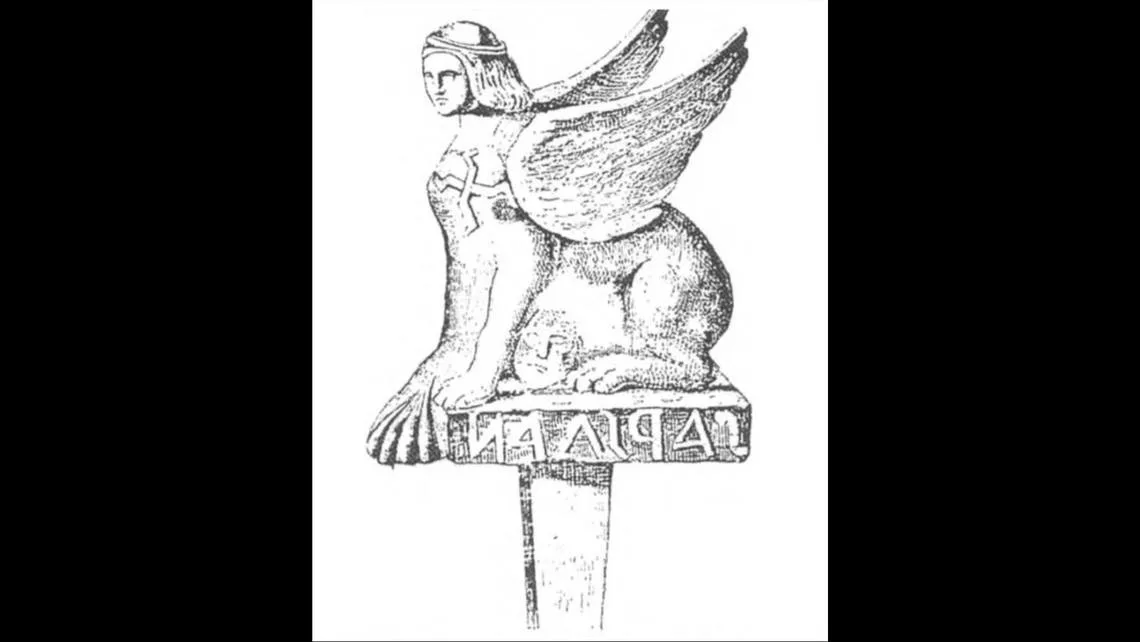
‘Mysterious’ inscription on the bronze Dacia sphinx deciphered.
Discovered 2 centuries ago and stolen from a European count in 1848, the mystery of the inscription on the bronze Dacia sphinx statue has been solved.
The bronze Dacian sphinx statue was discovered in Dacia, a Roman province corresponding to modern-day Romania.
Dacia is the ancient name of Romania and has seen the domination of various groups and empires throughout history. In Antiquity, Dacia was part of the Kingdom of Dacia and later became a province of the Roman Empire after being conquered by the Roman Emperor Trajan in 106 AD.
However, in the 3rd century, invasions by Goths and other tribes weakened Roman control and around 270 AD the Romans withdrew from Dacia. Subsequently, Dacia fell under the rule of various tribes and empires.
📣 Our WhatsApp channel is now LIVE! Stay up-to-date with the latest news and updates, just click here to follow us on WhatsApp and never miss a thing!!
The inscription on the sphinx has finally been deciphered, revealing a short but “unusual” poem, according to a study published on December 30 in the Journal Mediterranean Archeology and Archaeometry.
The inscription around the base of a bronze sphinx statue was found to be written using the archaic Greek alphabet. However, the phonetic values of the Greek alphabet form a text that is meaningless in Greek. Therefore, the meaning of the inscription has puzzled scholars since the artifact was discovered in the early 19th century.
The researchers were unsuccessful because it was probably read from left to right, an “unusual” departure from ancient norms. The scribe was most likely trying to express something in a language other than Greek using an archaic Greek alphabet. The phonetic values of the archaic Greek alphabet record a short rhythmic poem in Proto-Hungarian.
Translated into English, it reads “Look, behold, worship: here is the sacred lion”, which could be perceived as a command to respect the sphinx.
“The characters may seem mysterious at first, but once the projection is noticed, the characters become easily recognizable as letters of the Greek alphabet, with a few in a more archaic form,” Peter Revesz, study author and professor at the University of Nebraska, told McClatchy News.
The decoded poem is remarkable because “the cult of the sphinx was not part of mainstream ancient Roman mythology, which included the Roman gods and goddesses familiar to many people today,” Revesz said.
Revesz emphasized that this sphinx sculpture is unique in that it provides some record of a minority religion for which records in the Roman Empire are much less complete.
Source: arkeonews
You may also like
- A 1700-year-old statue of Pan unearthed during the excavations at Polyeuktos in İstanbul
- The granary was found in the ancient city of Sebaste, founded by the first Roman emperor Augustus
- Donalar Kale Kapı Rock Tomb or Donalar Rock Tomb
- Theater emerges as works continue in ancient city of Perinthos
- Urartian King Argishti’s bronze shield revealed the name of an unknown country
- The religious center of Lycia, the ancient city of Letoon
- Who were the Luwians?
- A new study brings a fresh perspective on the Anatolian origin of the Indo-European languages
- Perhaps the oldest thermal treatment center in the world, which has been in continuous use for 2000 years -Basilica Therma Roman Bath or King’s Daughter-
- The largest synagogue of the ancient world, located in the ancient city of Sardis, is being restored











Leave a Reply